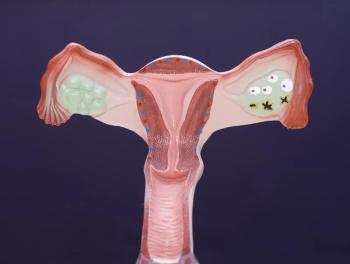
Nurses Performed Colposcopies Effectively in Low-Resource Areas
Nurses trained in the visual inspection with acetic acid cervical cancer screening method were able to successfully perform colposcopy and detect cervical lesions.
Nurses trained in the visual inspection with acetic acid (VIA) cervical cancer screening method were able to successfully perform colposcopy and detect cervical lesions using the Swede score system, according to the results of a study
According to researchers led by Ashrafun Nessa, PhD, of the department of obstetrics and gynecology at Bangabandhu Sheikh Mujib Medical University (BSMMU), Dhaka, Bangladesh, this “task-shifting” from highly-qualified specialists to the least specialized professional skilled at safely and reliably performing the task could aid the 266,000 women in low-resource settings who die from cervical cancer each year.
“There is now an opportunity for policymakers to reduce the human resource gap by organizing training programs for educating nurse colposcopists and outreach see-and-treat in low-resource settings, and to promote and evaluate such programs in adequately powered researchers studies,” Nessa and colleagues wrote.
According to the study, mortality rates of cervical cancer are much higher in less developed areas of the world, and women in these low-resource settings often do not have access to national screening programs. In some of these areas, VIA by trained nurses and doctors has been implemented as a low-cost cervical cancer screening method. Women who are VIA positive are referred for colposcopy.
“In high-resource settings, nurse colposcopists have been trained to increase accessibility to colposcopy and achieve similar diagnostic accuracy as doctors, and a similar approach in low-resource settings, with diagnosis and screening by the portable battery-driven colposcope, the Gynocular, could offer an accurate, cost-effective and pragmatic approach to combat cervical cancer,” the researchers wrote.
In this study, the researchers enrolled 932 women attending a colposcopy clinic in Bangladesh who were classified as VIA naive or VIA positive (referred from another site). Prior to the study, VIA nurses were trained in colposcopy and in the Swede score system, which assigns patients a number from zero to two for each of five colposcopic variables (acetowhiteness, margins plus surface, vessel pattern, lesion size and iodine staining). Patients were randomly assigned to undergo colposcopy with either stationary colposcope or the Gynocular, a portable battery-driven colposcope.
Results showed no significant difference in tabulating Swede score between doctors and VIA trained nurses, or between the use of the stationary or Gynocular colposcope.
Based on these results, the researchers concluded that “training of nurses on colposcopy and the use of the Gynocular could have a widespread effect in reducing the number of women dying from cervical cancer, which in turn could have a major impact on community structure and wealth.”
Newsletter
Stay up to date on recent advances in the multidisciplinary approach to cancer.





















































































